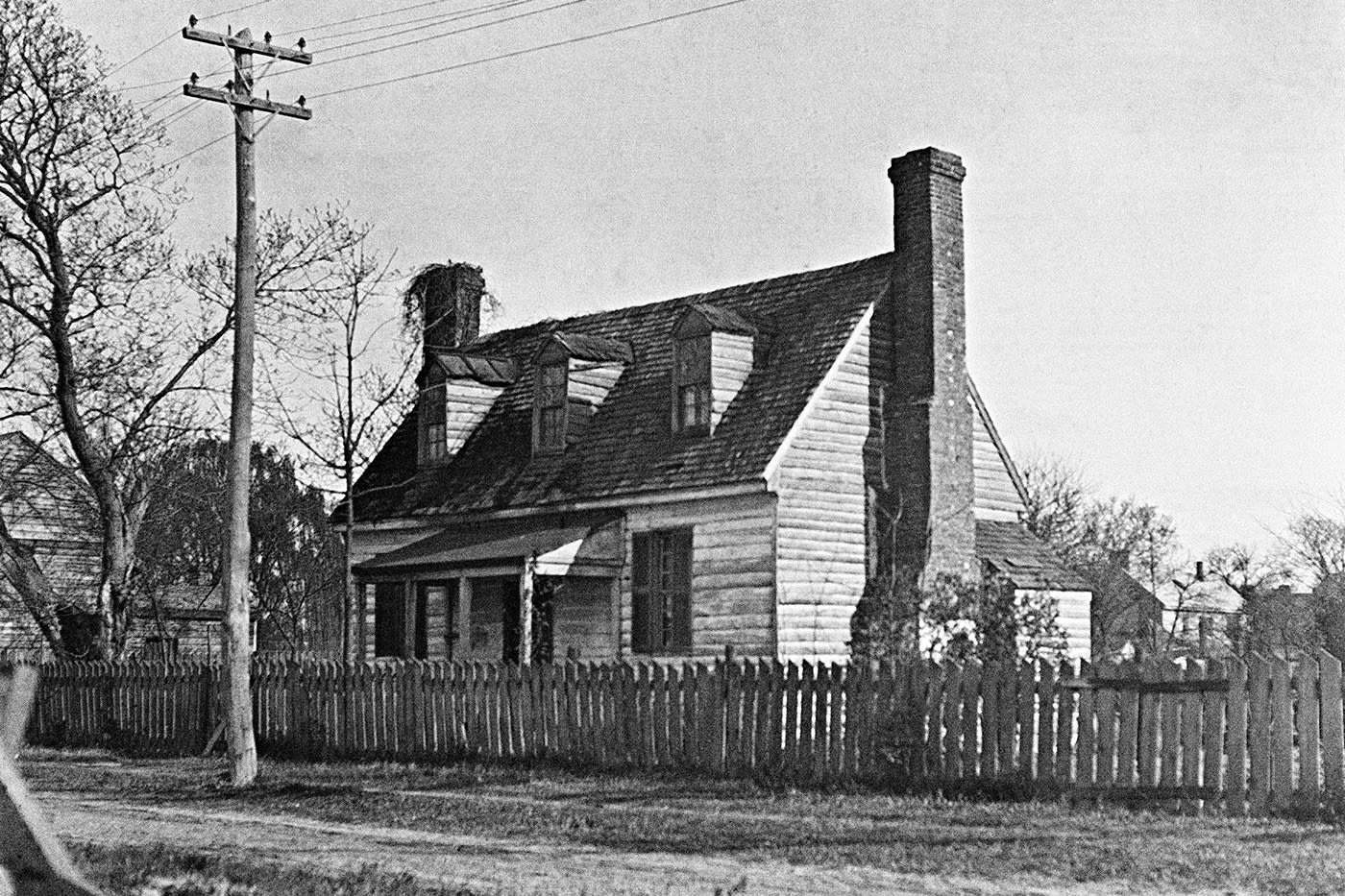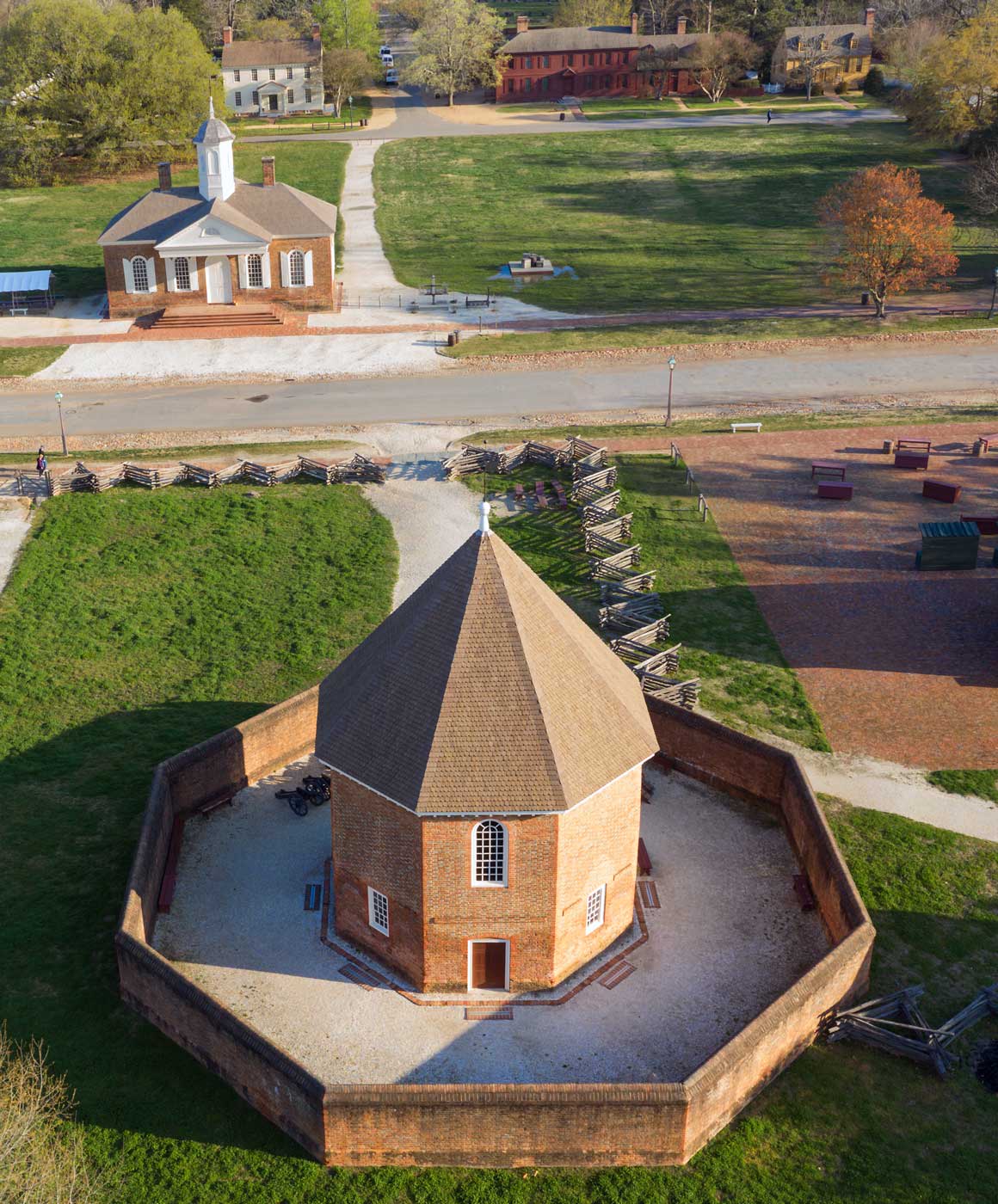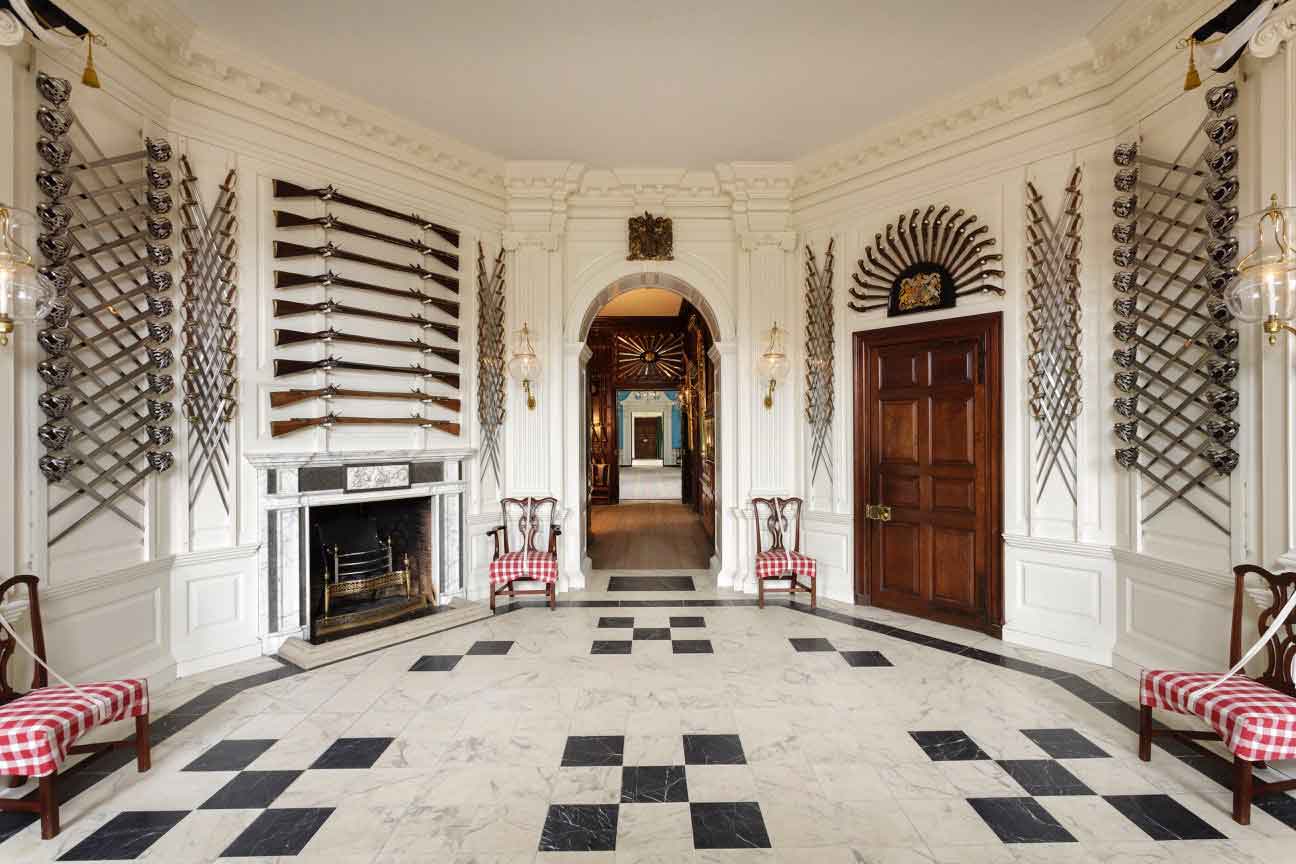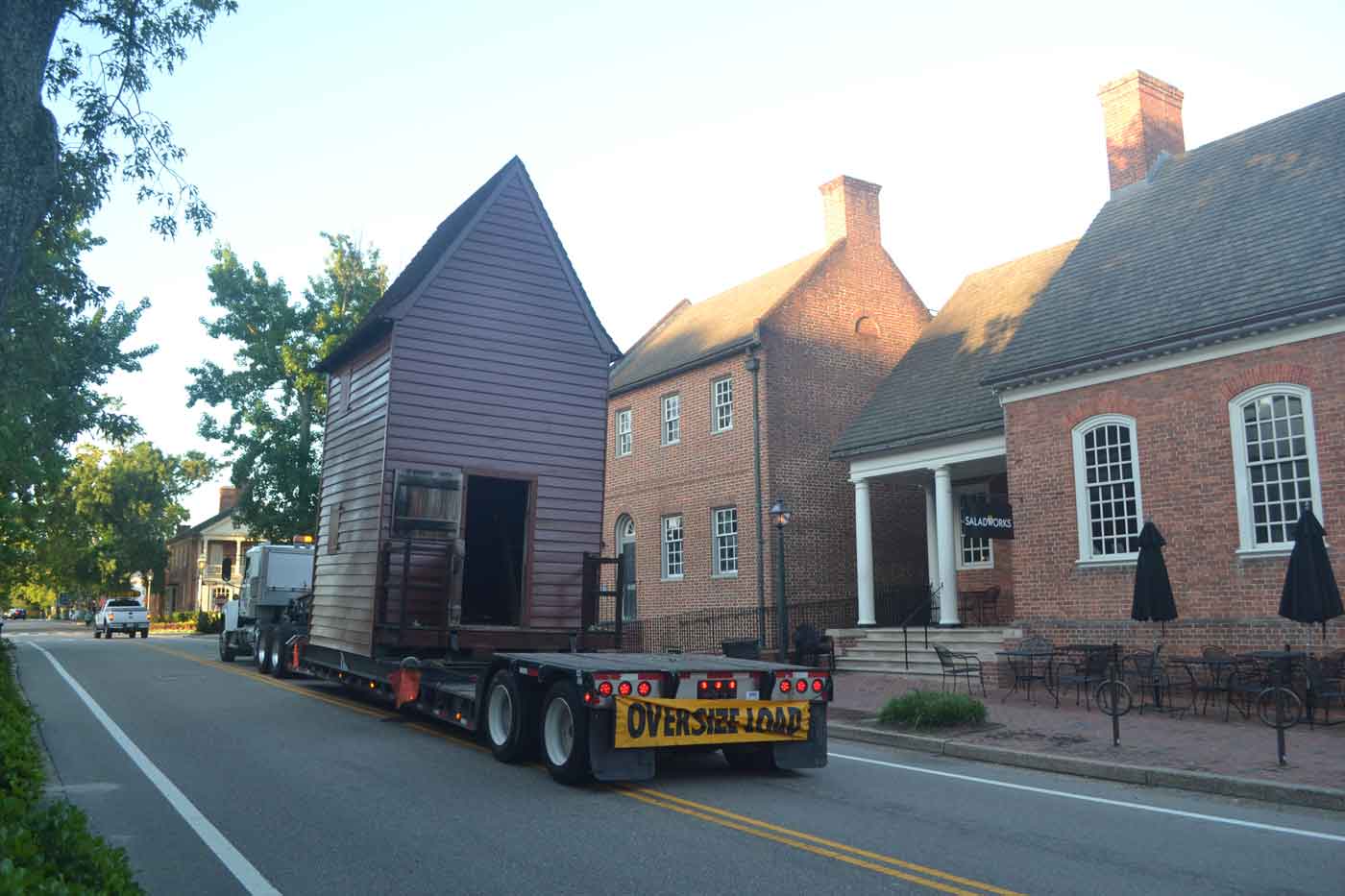Architectural preservation and research staff at Colonial Williamsburg are responsible for the care and scholarly interpretation of buildings in the Historic Area. This work includes preservation and stewardship of historic structures, design of new reconstructions, historic interiors, curation of the architectural collections, and ongoing research on the city's built and cultural environment. Below you will find some of the research projects currently underway at Colonial Williamsburg.
Bray School Project

Site: Corner of Francis and Nassau St.
Not currently open to the public
The first school to educate free and enslaved black children in Williamsburg opened in 1760 and is the oldest surviving Bray School in the Americas. It was established by the Bray Associates, a religious organization affiliated with the Anglican Church. They appointed Ann Wager to teach a curriculum based on the Anglican faith. Several enslavers sent students, including Sarah and James from Hugh Orr’s household. The children who attended ranged from ages three to ten and were among the first black children to have access to a formal education in Colonial America. Part of this education was learning to read, which allowed them access to literature and news. In fact, Robert Carter Nicholas corresponds with the Bray Associates about his concerns over what the students were reading outside the classroom.
The school closed in 1774 following the passing of Ann Wager. The inability to find a new teacher, lack of funding, and discourse that would lead to the Revolution prevented the continuation of the school.
In 2020, the Bray School, located on William & Mary’s campus, was identified using dendrochronology (tree ring dating), which dated the structure to 1759/1760. Before any investigations began, the entire building, including the modern additions, was digitally scanned. Two-dimensional drawings which were made from the scans will be archived. Once the building was documented and recorded in its present condition, the preservation team started the task of meticulously deconstructing the twentieth-century modifications to look at the original elements that survive in the building. This included removing modern plaster, carpeting, and fixtures. The goal is to determine how the building looked when it was first constructed and subsequently used by the Bray School. The benefit of removing the modern plaster is that we can see changes made to the framing and areas where building materials were reused. We are collecting building fragments and objects found in the walls near rodent nests. These items shed light on the original finishes and various inhabitants of the building since 1760.
On Friday, February 10, 2023, the Williamsburg Bray School building was relocated from its location on the edge of the William & Mary campus to its permanent home in Colonial Williamsburg’s Historic Area. The structure now resides at the intersection of Francis and Nassau streets near the site of the First Baptist Church excavation. This is the second move since it was relocated from its original site on Prince George Street in the 1930s. Once it has moved, the preservation department along with CW’s Building Trades and Historic Trades will restore the building to its 1760 appearance. Interpretive programming is also in the works for this site. It is scheduled to be fully restored in 2024.
Magazine Project

Site: Not currently open to the public. Check back for changes to access.
The Powder Magazine is one of the original buildings at Colonial Williamsburg. It served as a military warehouse to store gunpowder, arms, uniforms, and more. The design of the building and the interiors have not been reconsidered since the initial restoration in 1934. With all that has been discovered about eighteenth-century buildings since the 1930s, it was clear that the Colonial Revival interior needed to be addressed. As we started to consider the space, however, it became evident that a more thorough investigation of the remaining original material needed to be conducted. The Magazine has undergone several formal preservation campaigns, the first in 1890 by the Association for the Preservation of Virginia Antiquities (APVA), that complicate our ability to read the surviving evidence.
In 2021, CW Archaeologists started excavations in the yard enclosed by the perimeter wall, an area that had not been previously studied. We were rewarded almost immediately with fragments of roof tile that were found in an early context. While there are many questions about the style of the roof tile, we are now considering reproduction handmade tiles for the project. Inside the Magazine, CW Carpenters removed the 1930s revival style shelving from three of the second-floor walls and CW Masons followed by removing the modern plaster. This provides us the opportunity to look at the original brickwork which had only been visible to us in early black and white photos.
A restoration is currently underway. Check back for more information on the building reopening to the public.
Everard Parlor Project


Site: Thomas Everard House on Palace Green.
Project Summary
The Everard House is remarkably intact and continues to offer new findings. There have long been questions about the wall finishes in the parlor. Upon further investigation of the parlor, evidence of an early rag-based paper was discovered attached to the top of a window architrave. This supports the theory that the room had in fact been papered in the period. The wallpaper discovery prompted us to revisit the interpretation of the entire space. This led to the decision to repaint the woodwork based on recent scientific paint analysis. A new furnishing plan for the room will be developed with the curatorial team. The furnishing plan will combine documentary, architectural, and archaeological evidence and provide a rationale for each object installed in the space.
What’s going on now?
Following the discovery of small traces of wallpaper evidence in the Parlor, the Preservation team consulted primary sources and studied comparative spaces to determine the paper for this space. “Walpole Damask” that is reproduced by Adelphi Paperhangings was identified as the best choice. Currently we are focused on the verdigris paint used on all of the trim and doors. Kirsten Moffitt, conservator and materials analyst, is working with another historic paint specialist to determine the appropriate formula for this space that will match the original paint composition applied to the walls in 1770. The preservation team also extracted many original carpet tacks from the outer perimeter walls and is in the process of analyzing the wool carpet fibers. This information will help us better understand if the fibers date to the eighteenth century and what colors were in the original carpet purchased by the Everard family.
Previous Preservation Projects
Learn More

Architectural Preservation and Research
Through continued research and ever-expanding analysis, Architectural Preservation and Research staff are continuing to not only provide a scholarly interpretation of the buildings, but a rich visual and personal experience for our guests.

Williamsburg Bray School Initiative
Colonial Williamsburg and William & Mary have identified a small, white building tucked away on the William & Mary campus as the structure that once housed the Williamsburg Bray School, an 18th-century institution dedicated to the education of enslaved and free Black children. Learn more.


